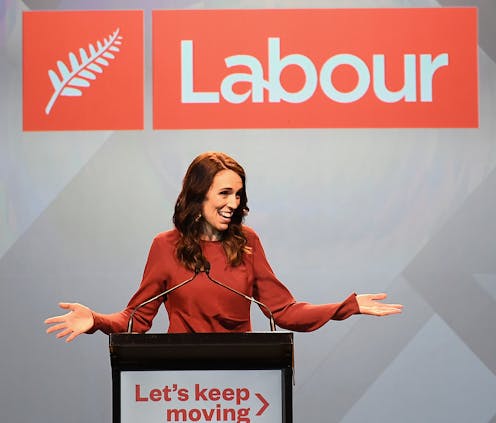Source: The Conversation (Au and NZ) – By Liz Minchin, Executive Editor

Hannah Peters/Getty Images
The article was updated on Friday November 6, 2020, to reflect the final official figures released by the Electoral Commission.
Labour is celebrating a landslide victory tonight after winning 49% of the vote (confirmed as 50% after special votes were counted). The result means Labour could govern alone — the first time this has happened since New Zealand introduced a mixed member proportional (MMP) electoral system in 1993.
In her victory speech, Prime Minister Jacinda Ardern said the result gave Labour “the mandate to accelerate our [COVID-19] response and our recovery. And tomorrow we start”.
Earlier, National Party leader Judith Collins, whose party only won 26.8% of the vote (reduced to 25.6% in the final count), promised to be a “robust opposition” and “hold the government to account for failed promises”.
You can read the analysis of the results by our five political experts here.
In the new parliament, Labour will have 65 seats — four more than the 61 needed to form government. National has 33, the Green Party ten, ACT ten and the Māori Party is expected to return to parliament with one seat (later increased to two seats after special votes increased the party vote to 1.2%).
The numbers are a reversal of the 2017 results, when Labour polled 36.9%, National had 44.4% of the vote and New Zealand First leader Winston Peters became the kingmaker.
New Zealanders had to wait almost a month before Peters announced he would form a coalition with the Labour Party, becoming deputy prime minister. The Green Party joined the coalition in a confidence and supply arrangement.
In this election, NZ First was ousted from parliament, after the party failed to reach the 5% threshold and neither of its candidates managed to win an electorate seat.
Five parties gained seats in parliament. The Māori Party is expected to win one of seven Māori electorate seats and return to parliament even though it only achieved 1% of the party vote (1.2% in the final count). None of the other minor parties won electorate seats or reached the 5% party vote threshold.
Compared to previous elections, record numbers of New Zealanders voted early in 2020. A day before the election, almost 2 million people had already cast their vote.
Read more:
NZ election 2020: how might record advance voting numbers influence the final outcome?
Results of the referendums
People also voted on two referendums: whether the End of Life Choice Act 2019 should come into force and whether the recreational use of cannabis should become legal.
The results for those are now finalised. Almost two thirds of the vote was in support of the introduction of the Right to Life legislation.
The vote for legalising the recreational use of cannabis was much closer but the majority favoured the No decision.
2017 election results
In 2017, the National Party won 44.4% of the votes and on election night, then prime minister Bill English celebrated victory.
But NZ First won 7.5% and held the balance of power. It was the third time for NZ First leader Winston Peters to become the veto player in the government-formation process.
After almost four weeks of negotiations, he opted to go into coalition with Labour, with the Green Party in a confidence and supply role. For the first time under New Zealand’s MMP electoral system, the new government was not led by the party that had won the largest number of seats.
Jacinda Ardern became prime minister in an extraordinary period in New Zealand’s political history. Just three months earlier, Ardern had been the deputy leader of a Labour Party polling in minor party territory.
![]()
– ref. New Zealand’s new parliament turns red: final 2020 election results at a glance – https://theconversation.com/new-zealands-new-parliament-turns-red-final-2020-election-results-at-a-glance-147757








